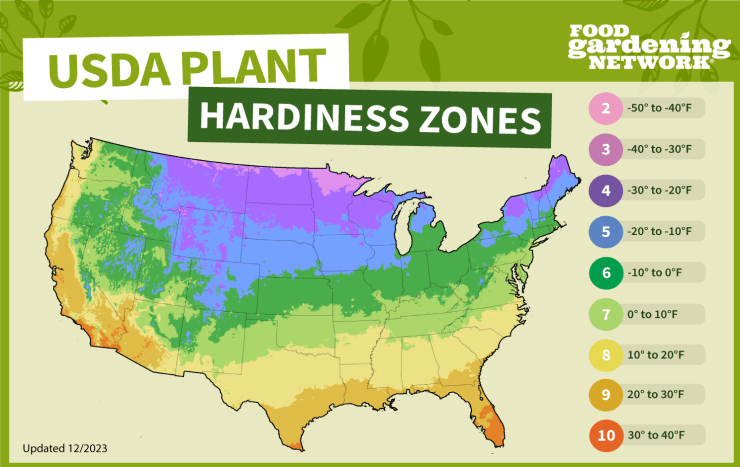Apples are typically grown in USDA Plant Hardiness Zones 3 to 8. Here are some examples of U.S. states within these recommended growing zones:
Zone 3: Some states in this zone are:
- Northern parts of Minnesota
- Northern parts of North Dakota
- Northern parts of Montana
Zone 4: Some states in this zone are:
- Wisconsin
- Michigan (except for the southern regions)
- Maine
- Vermont
- New Hampshire
- Parts of New York
Zone 5: Some states in this zone are:
- Illinois
- Indiana
- Ohio
- Pennsylvania
- New York (southern regions)
- Massachusetts
- Connecticut
Zone 6: Some states in this zone are:
- Missouri
- Tennessee
- Kentucky
- Virginia
- North Carolina
Zone 7: Some states in this zone are:
- Arkansas
- Oklahoma
- Northern Texas
- Parts of Georgia
- Parts of South Carolina
Zone 8: Some states in this zone are:
- Texas (except the northern regions)
- Louisiana
- Mississippi
- Alabama
- Florida
- Parts of California
Growing apples indoors is possible to some extent. However, apple trees are typically large and require a lot of sunlight and space to grow and produce fruit optimally. Indoor cultivation of apple trees can be challenging due to the following reasons:
- Space requirements: Apple trees can grow quite large, and indoor environments may not provide enough space for them to reach their full size potential.
- Light requirements: Apples trees need full sun exposure for several hours each day to produce fruit successfully. Indoor settings may not always provide enough natural light, and supplemental grow lights may be required.
- Pollination: Apple trees usually require cross-pollination with another compatible apple variety for fruit production. In an indoor setting, it might be challenging to ensure proper pollination, unless you have multiple apple trees or utilize manual pollination techniques.
- Temperature and humidity control: Indoor environments can have limited airflow and may not offer the ideal temperature and humidity conditions for apple trees to thrive.
- Disease and pest management: Indoor environments can be more conducive to the development of certain pests and diseases, which may require more attention to prevent and manage effectively.
If you are interested in growing apple trees indoors, consider dwarf or miniature apple tree varieties that are better suited for container gardening and indoor cultivation. These smaller varieties have been bred to be more compact and may adapt better to limited spaces. However, keep in mind that even dwarf trees may still require considerable care and attention to grow and produce fruit successfully indoors.
Check out the USDA Plant Hardiness Zone Map and find out what zone your zip code is located in here. Or you can use our map to get a general idea of what your plant hardiness zone is.



 Previous
Previous


Hello my name is PAT G. & I live in EDMONTON, ALBERTA, CANADA which is NORTH OF IDAHO!! After reading the “APPLE GARDENING GUIDE” in which you talk about the Different Growing Zones in the US my question is: Would You be able to me Which Growing a Zone I’m in so That I can know what I need to do to grow Apples here? Also just so you know I DON’T HAVE A “GREEN THUMB” Meaning that I even “OVERWATERED” A CACTUS!!!????????????!!! I’m hoping with your Help that maybe I can be successful at Growing Flowers, Fruits & Vege-tables (MAYBE???) Anything that you be willing to Share would be VERY MUCH APPECIATED!!! THANK YOU!!!
Sincerely, Pat Generoux